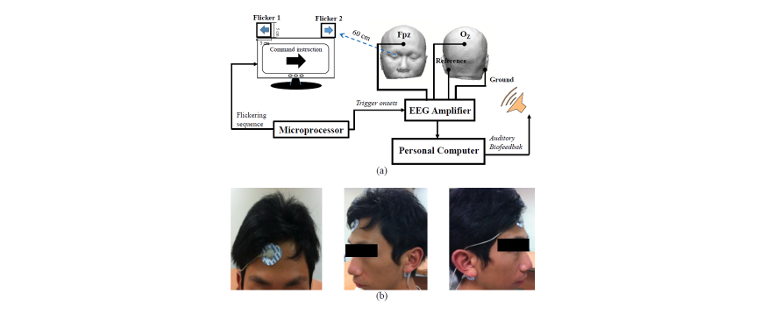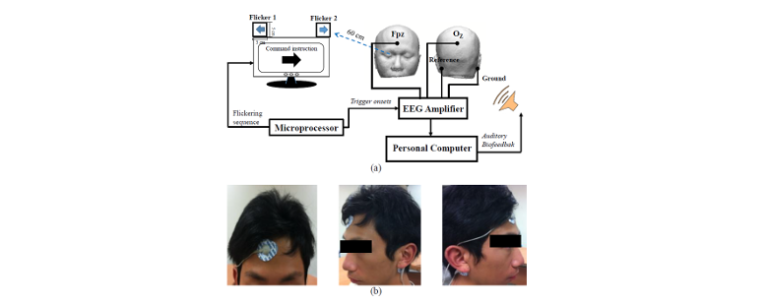
This paper studied the amplitude-frequency characteristic of frontal steady-state visual evoked potential (SSVEP) and its feasibility as a control signal for brain computer interface (BCI). SSVEPs induced by different stimulation frequencies, from 13 ~ 31 Hz in 2 Hz steps, were measured in eight young subjects, eight elders and seven ALS patients. Each subject was requested to participate in a calibration study and an application study. The calibration study was designed to find the amplitude-frequency characteristics of SSVEPs recorded from Oz and Fpz positions, while the application study was designed to test the feasibility of using frontal SSVEP to control a two-command SSVEP-based BCI. The SSVEP amplitude was detected by an epoch-average process which enables artifact-contaminated epochs can be re-moved. The seven ALS patients were severely impaired, and four patients, who were incapable of completing our BCI task, were excluded from calculation of BCI performance. The averaged accuracies, command transfer intervals and information transfer rates in operating frontal SSVEP-based BCI were 96.1%, 3.43 s/command, and 14.42 bits/min in young subjects; 91.8%, 6.22 s/command, and 6.16 bits/min in elders; 81.2%, 12.14 s/command, and 1.51 bits/min in ALS patients, respectively. The frontal SSVEP could be an alternative choice to design SSVEP-based BCI.

